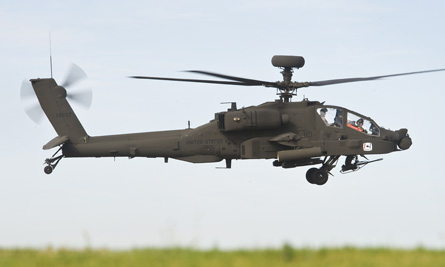An improved datalink intended to give the Boeing AH-64 Apache Longbow Block III attack helicopter greater control over sensors carried by unmanned air vehicles completed its first flight milestone on 23 January.
On its first flight, the unmanned aerial systems tactical common datalink assembly, or UTA, connected an AH-64D and Boeing's unmanned Little Bird helicopter, says Greg Walker, UTA business development manager for Longbow, a Lockheed Martin/Northrop Grumman joint venture.
The two-way, high-bandwidth UTA datalink would upgrade the Block III Apache, compared with a tactical dominant data link (TCDL) recently fielded on Block II models. The current TCDL allows the Block II fleet to receive video from UAV sensor payloads and transmit the data - via the Video from UAS for Interoperability Teaming - Level 2 (VUIT-2) system - to troops on the ground.
 |
|---|
© US Army |
In the future, the UTA technology would allow one-third of the Block III fleet to not only receive and relay UAV video to the ground, but also permit the Apache crew to control the sensor's activity and the UAV's flightpath.
So far, the UTA has only demonstrated the ability to acquire the UAV in flight and display the sensor's video in the Apache cockpit. Full control of the UAV's payload will take place later in the flight-test programme, Walker says.
The UTA is installed in the mast-mounted antenna that normally hosts the AH-64's fire control radar. The army plans to equip about one-third of the Apache force with the radar and about one-third with the UTA, Walker adds.
The US Army plans to take delivery of the AH-64 Block III during fiscal year 2013.
Source: Flight International
















